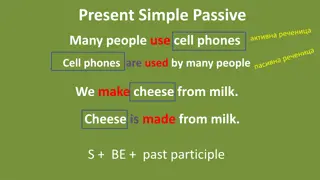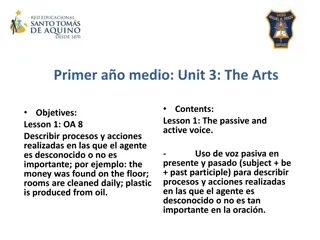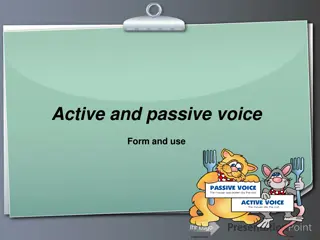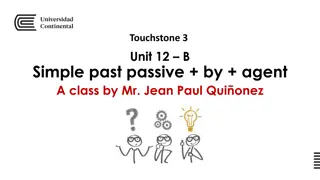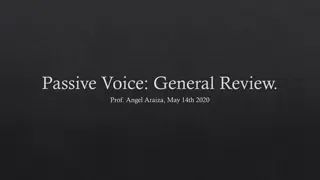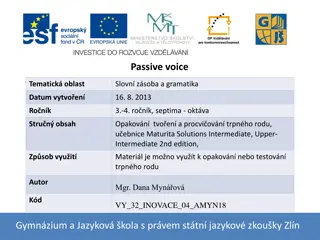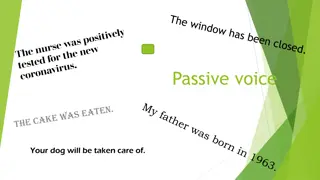Understanding Passive Voice and Verb Forms in English
Explore the concept of passive voice in English grammar through examples and explanations of modal verbs, infinitives, gerunds, and verb forms. Learn how to form passive sentences and identify different verb structures. Practice converting active voice sentences to passive voice for a deeper understanding of linguistic structures.
Download Presentation

Please find below an Image/Link to download the presentation.
The content on the website is provided AS IS for your information and personal use only. It may not be sold, licensed, or shared on other websites without obtaining consent from the author. Download presentation by click this link. If you encounter any issues during the download, it is possible that the publisher has removed the file from their server.
E N D
Presentation Transcript
PROF: SEMIAL AJDINI semial.ajdini@live.com
Tense Active Passive Modal can take can be taken Gerund taking being taken Bare infinitive take be taken Full infinitive to take to be taken
a. I imagine being watchedby cameras is not pleasant. b. The scientist decided to be involved in the project. c. The public should be toldabout the dangers of mobile phones. Which sentence uses: 1. A modal verb and a bare infinitive? 2. A full infinitive? 3. A gerund?
1. We form the passive of a gerund with being + past participle. 2. We form the passive of a full infinitive with to be + past participle. 3. We form the passive of a bare infinitive with be + past participle.
You can give money to them. (active voice) They can be given money. (passive voice) Money can be given to them (passive voice) You must payattention in class. (active voice) Attention must be paid in class. (passive voice) The students can find books on the shelves. (active voice) Books can be found on the shelves. (passive voice)
1. I am expectingto be givena pay-rise next month. 2. She is hoping to be electedpresident. 3. The carpet needsto be washed. 4. The foundation of imitation among us comes from the desireto be transported out of ourselves. 5. The lamb is ready to be eaten.
He hatesbeing photographed. Her baby lovesbeing held. Being servedquickly is important for customers in a restaurant.




